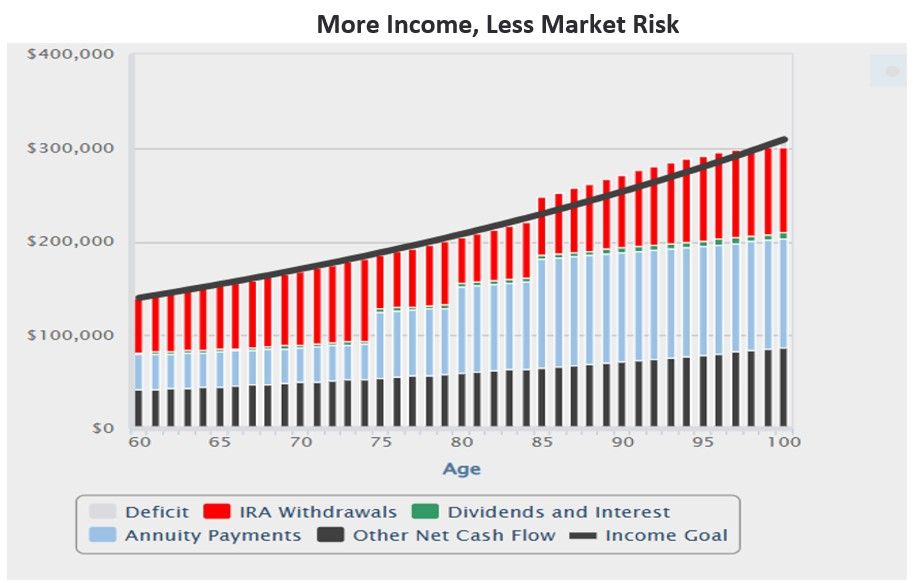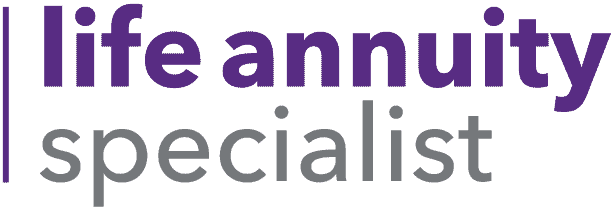Ramsey D Smith:
Hi and welcome to That Annuity Show. So today we have myself, Ramsey Smith, and Bruno Caren recording live from Atlanta, Georgia and Montreal, Quebec respectively. And our regular lead host, Paul, is out. So we’re going to see what we can do today. We’re very excited about our guest today, Bonnie Trickel, who is the founder of Endeavor Retirement. As many of you in the audience may know, certainly have talked about it a lot. I personally have the view that the opportunity in in plan for annuities is probably the largest. largest and most important asset gathering opportunity for the insurance industry in the next 10 or 15 years. And more importantly, it’s super important for American consumers and retirees. And Bonnie Treichel has been a real leader in this space. So we’re very much looking forward to chatting with her today. So with that, Bonnie, welcome to that Annuity Show. We’re happy to have you. Tell us a bit about yourself and then about Endeavor Retirement.
Bonnie Treichel:
Wonderful. Well, good morning and thank you for having me. I’m really excited to be here on the show this morning Again, my name is Bonnie Trichol. I am live from Kansas City Where I grew up before spending about 15 years on the West Coast. So I’m really excited to talk a little bit about Endeavor Retirement as well as a new law firm that we’ve launched Endeavor Law. Endeavor Retirement, you know, we were kind of talking a little bit before the show about like what is my why and Endeavor Retirement came out of this idea that really advisors needed an opportunity to have resources that for smaller RIAs who want to stay independent and they need those plug and play resources, that’s really where they can come to our firm and they can get their retirement plans to really serve their plan sponsor clients and participants in the most effective and efficient way possible and that’s why Endeavor Retirement was born. So it’s a consulting firm, we work primarily with advisors. One of the other opportunities that we’ve had is to do a lot of training and that training comes through two different partners in the industry that have been really good partners. The American Retirement Association’s division of NAPA, so the plan advisor section and that’s where we’ve created some training including about coming out soon, probably this summer, which is the retirement income certificate. So advisors will be able to sit through this online training program and then get a certificate at the end, but they’ll really learn the basics, some of which we’ll talk about today in the in-plan retirement income space. The other place that I’ve spent some time with a really good partner in the industry is Broadridge’s FI360. Again, they’ve brought together a consortium, the Retirement Income Consortium, and I’ve done a lot of work with them to that program to help create the prudent practices for selecting in-plan retirement income options. So that’s really where I get kind of my excitement for a lot of what we’re doing right now is creating that training for advisors, trying to take these complex topics, break them down, make them simple so that advisors can consume them, and most importantly, go share them with plan sponsors and participants.
Ramsey D Smith:
All right, well thank you for that. So I can’t resist, you mentioned that you also have a law firm that you just started. So tell us a little bit about the role of the law firm and then the next thing we’ll do is we’ll define in plan for the audience for whoever hasn’t focused on it yet. So first of all, tell us about the law firm.
Bonnie Treichel:
Yeah, absolutely. So we started seeing a need again, you know, all of this comes from where we’re watching the need from clients. And so we started seeing a need from some of our advisors that they needed, uh, access to legal advice for themselves, but also for their plan sponsor clients. So, uh, the law firm was again born out of the same model of how can we have cost effective resources for both advisors and their plan sponsor clients. So the model is really, uh, we make it our business to know your business and become integrated into those really help them to keep their legal costs down. And then on the plan sponsor side, really trying to make it cost effective for plan sponsors to do the right thing. So when you think of a VCP filing, for example, trying to do that in a flat fee environment to really help them effectively correct what they need to and be able to move forward. So it’s been a lot of fun starting to launch that second business and do that with partners in the industry.
Ramsey D Smith:
Well, look, that makes a lot of sense to me because what I found since I’ve gotten into this space is that there seem to be like two or three lawyers whose names keep coming up, right, in webinars, et cetera. So it’s good to know there’s some additional competition there.
Bonnie Treichel:
Competition and collaboration. You
Ramsey D Smith:
Well,
Bonnie Treichel:
know, there
Ramsey D Smith:
yeah.
Bonnie Treichel:
are some great attorneys who’ve been just awesome mentors. You know, I enjoy getting to spend time with like a Fred Rich, right? You know,
Ramsey D Smith:
Mm-hmm.
Bonnie Treichel:
I’m sure that’s one of the names you hear coming up over and over.
Ramsey D Smith:
Like 99% of the time that’s the name we hear.
Bonnie Treichel:
That’s right, that’s right. But you know, some of these are just great, great mentors that you can learn a lot from and then help deploy that to additional advisors and plan sponsors.
Ramsey D Smith:
Got it. Okay. So let’s get into it. In plan. What, what is the, what is the in plan opportunity? What are, what are, what are in plan annuities? What are we talking about here for our, for our, for sort of, for our broader audience?
Bonnie Treichel:
Yeah, good question. So, you know, for advisors, it’s funny, when I when I go out and I present, I’m getting a lot of different questions. Some people are further along on their in-plan journey than others who are starting right at the beginning start line here. And so when we think about it and take a step back, it’s like, what is in-plan annuities? Or what are these in-plan retirement income solutions compared to the retail side? And I think, you know, Ramsey, we were talking about how are we defining these solutions? So maybe I’ll take a step back and ask, I think many people are familiar with some of these options that they’re really not new. They’re just getting a lot of new buzz and a lot of new headlines, right? So many of these solutions, just, for example, like Pru’s income flex, right? That’s been around for a very long time. And there’s many others not to pick on Pru one way or the other, right? But it’s just, that’s a name that many of us are familiar with. That’s the type of solution that we’re talking about for several years. I think the question becomes, and let’s come back to this kind of in plan versus out of plan in a minute.
Ramsey D Smith:
Can I ask one question just very quickly?
Bonnie Treichel:
Yeah.
Ramsey D Smith:
Because I think this is great. When you say advisors, specifically what kind of advisors? Because sometimes it might be insurance advisors, sometimes it might be RAs, when we use that term on the show. So I wanna make sure like, what kinds of advisors, for which kinds of advisors is this discussion most relevant? Yeah.
Bonnie Treichel:
Great question. When we’re talking about in-plan retirement income solutions, this is going to be a conversation for someone who’s working with a retirement plan. So a 401k, 403b, those types of plans where you would be adding this solution in the 401k or in the 403b as opposed to selling it in the retail space after an individual has retired and come to you and said, hey, I’d like to purchase this annuity.
Ramsey D Smith:
And what licenses would they need to have? Like, what is this? Is it Series 65? Is it
Bonnie Treichel:
Ha.
Ramsey D Smith:
just an insurance license? What is with a typical? I don’t want to take this too far off track, but I just want to make sure that we want everybody in the audience to know what they need to do in order to sort of be a player in this space.
Bonnie Treichel:
Yeah, so you’re raising actually a really, really great question, which
Ramsey D Smith:
Yeah.
Bonnie Treichel:
is if I am a typical retirement plan advisor, let’s say I’m at an SEC registered firm, an RIA, and I have, for example, my Series 65, the question keeps coming up, do I need an insurance license to do this? What I will say is first, always check with your compliance department. Second, I’m not giving you legal advice, but in most
Ramsey D Smith:
Unless
Bonnie Treichel:
instances…
Ramsey D Smith:
I pay for it at Endeavor Law.
Bonnie Treichel:
That’s right. That’s right. You can pay for it and then I will. But not to the masses. So the question becomes, do you need an insurance license for most of these newer solutions? You should be evaluating that on a solution by solution basis and of course, checking with your compliance department. But what I’m seeing with most of these newer solutions coming to market is that they’re getting the insurance license at the solution level. So for example, that I’m gonna call it DCIO or wholesaler, they’re getting their insurance licenses so that the individual advisor is not required to because that individual advisor is not actually, they’re not making that recommendation of the insurance piece themselves. So again, we could go down a compliance rabbit hole,
Ramsey D Smith:
that’s
Bonnie Treichel:
but
Ramsey D Smith:
fine
Bonnie Treichel:
in general,
Ramsey D Smith:
okay but
Bonnie Treichel:
I think
Ramsey D Smith:
they do
Bonnie Treichel:
that
Ramsey D Smith:
have to be the basic issues they have to be a fiduciary
Bonnie Treichel:
Yeah, I mean, I think so well again, it depends on the role they take so I think
Ramsey D Smith:
Okay.
Bonnie Treichel:
some advisors This is a great conversation because some advisors may take an education only approach
Ramsey D Smith:
Okay?
Bonnie Treichel:
and they may just educate on Retirement income right
Ramsey D Smith:
Okay.
Bonnie Treichel:
so they might educate their plan sponsor They might educate participants and they might decide to work with Someone else in the industry who’s actually going to make that recommendation of the retirement income option now more likely is going to be the case where instead the advisor, the retirement plan advisor, is going to act as a 321, for example, fiduciary under ERISA, and they would actually make that recommendation. But I think it could go either way. So I think advisors have an opportunity to take whatever role they’d like and of course reflect that in their agreement and so forth.
Ramsey D Smith:
Okay, great, thank you. Sorry for moving it to that, but I wanted to make sure,
Bonnie Treichel:
Yeah.
Ramsey D Smith:
I wanna make sure that like, I wanna make sure that folks in the audience understand sort of what they need to pursue the opportunity. So, good.
Bonnie Treichel:
Yeah, so I mean, I think if I interject for a second, we
Ramsey D Smith:
Yeah.
Bonnie Treichel:
recap. I think the big point, if I’m a listener and I’m an advisor, it’s, this is a conversation for retirement plan advisors where on a solution by solution basis, they need to make sure they are evaluating, do they have the proper licenses? And third, checking with their compliance department and making sure they’re in line with that, because I think you’re raising a hugely important point.
Ramsey D Smith:
Okie doke. All right. And so then I had interrupted you were on a role before talking about talking about defining in plan. So if I can we can bring get back to where we left off there would love to do that. So we were defining
Bonnie Treichel:
Oh.
Ramsey D Smith:
in plan.
Bonnie Treichel:
Ramsey, I could get on a roll on this topic and talk for three hours. So you’d really have to stop me. So
Ramsey D Smith:
Okay.
Bonnie Treichel:
when we think about in-plan, I think the question is coming up again, language is important, how we define these things are important. And I think in many ways we’re not totally there yet, right? So I think I define in-plan as something where a plan sponsor is going to make that recommend, not make the recommendation, but the plan sponsor is going to make that selection, right? So there’s some sort of fiduciary oversight for having this option in the plan. I think maybe I’ll turn it over to you because I think you have a different definition of what
Ramsey D Smith:
Ha.
Bonnie Treichel:
in plan versus out of plan is. And I think it’s important because it depends on how
Ramsey D Smith:
Sure.
Bonnie Treichel:
we look at that.
Ramsey D Smith:
So for the audience’s benefit, we were having a discussion before we hit record about the definition of in plan because there are lots of different providers in the space and each of them takes a different approach. As I said at the time, I think Bonnie’s definition, strictly speaking, is probably the right one in that anything that occurs inside the plan, right, irrespective of the timing of when an annuity kicks in, either in the accumulation or decumulation period, is subject to the appropriate level of oversight that Bonnie helps people execute. As somebody who’s sort of focused on the product side and trying to see sort of broader and earlier adoption, for me, the definition of in-plan, or I should say the most effective version of in-plan in my view involves bringing in annuities during the accumulation phase accumulation phase. So anyway, that’s my differentiation. But Bruna, let’s bring you in. Bruna, what are some of your thoughts in this space? So I’m gonna remind everybody, Bruna wrote a book on this topic. So Bruna’s insight’s very important here.
Bruno Caron:
Well thanks and
Bonnie Treichel:
and be a…
Bruno Caron:
I want to go back to the income part that you did mention. When
Bonnie Treichel:
win.
Bruno Caron:
everyone retires, people can have multiple foreign case, multiple IRAs, and you brought the word fiduciary. When you’re fiduciary, technically you want to make sure that you take every single step to make sure that you’ve done the right thing. some fiduciaries to go on the very conservative side and let’s say it’s credit quality, or you’ll go at the, you know, AAA, you know, that kind of approach. When we talk about income,
Bonnie Treichel:
about income.
Bruno Caron:
retirement income, it’s all about striking that right balance. I mean, some people have a lot of pension money and, you know, recommending more income is not necessarily the right answer, but at the same time,
Bonnie Treichel:
But at
Bruno Caron:
more,
Bonnie Treichel:
the same time,
Bruno Caron:
a lot
Bonnie Treichel:
more
Bruno Caron:
of people
Bonnie Treichel:
a lot
Bruno Caron:
don’t
Bonnie Treichel:
of
Bruno Caron:
have enough income. And that’s why we have this conversation today. My question
Bonnie Treichel:
My
Bruno Caron:
is,
Bonnie Treichel:
question
Bruno Caron:
in a fiduciary
Bonnie Treichel:
is, and if you do share your…
Bruno Caron:
context, what are some of the boundaries and some of the guidelines in order to strike that right balance?
Bonnie Treichel:
Yeah, I think that’s a great question. So if I’m a retirement plan advisor and or I’m that plan sponsor and I’m making that fiduciary decision to add an in-plan option to the retirement plan, what are those fiduciary considerations? At the highest level, I think you have a consideration of when we think about the income conversation, it’s am I going to go with something that has a for my plan and its participants based on their demographics. And Bruno, you brought up a good point, right? If I’ve already got a DB plan at this company, do I need to add something with another guarantee? If I have no DB plan, like many of the companies out there today, then that’s gonna be taken into consideration. So step one is do I need a guarantee or not? Manage payout or not? Then when we go from there, then we’re going to start looking at things like if we’re going the guarantee route, this if you’re going to utilize the safe harbor, does this meet the requirements of the safe harbor? And then we go beyond that and have to look at things like balancing the cost and what are the services provided. And when I talk about services provided, those are even things as simple as like what is that employee experience or participant experience? How are they going to understand how to utilize this thing that we’re giving them? But you’re exactly right Bruno, you know, in retirement plans it’s so different than the retail space because as a whole, and we deal with this with target date funds too, right? How are we meeting the needs of this diverse population and looking at them as a whole because we still have to make one decision? So when one participant needs one thing, do we change that for the other 300? And so I think that’s what you’re getting at is like, how does that fiduciary overall look at that to then make that recommendation or determination?
Bruno Caron:
Absolutely. And, you know, one, to your point, I mean, that one employee can be there for, you know, two years in their thirties, while other employees can be there for 40 years and are now close to retirement. There’s one decision that needs to be made for everyone where, you know, these are completely different considerations and demographics and, you know, point in time in people’s lives. So the fact that, you know, those options have to be. available universally
Bonnie Treichel:
universally
Bruno Caron:
within that
Bonnie Treichel:
within
Bruno Caron:
one plan,
Bonnie Treichel:
that one plan.
Bruno Caron:
it makes it tricky
Bonnie Treichel:
It makes it
Bruno Caron:
because
Bonnie Treichel:
tricky.
Bruno Caron:
everyone has their own little story within
Bonnie Treichel:
story within.
Bruno Caron:
the plan.
Ramsey D Smith:
So, you know, it’s interesting. I think this feeds into what I think is an interesting tension in this in any place where there’s some kind of innovation, which is that, and Bonnie, to your point, like all the issues that we identify here already in some sense are paralleled in target date funds. But target date funds have been one of the most important sort of vectors for creating sort of retirement solution for millions of people, right? So I guess the… The question is, you know, how we, what do you think are, what do you think are some of the impediments to adoption here? There’s, so there’ve been some, there’ve been some recent articles, there’s an article in the Wall Street Journal about what Infidelity and State Street are doing, and there’s a lot more buzz, which I think we’re all very excited about. But, you know, what do you think, what do you think is sort of the arc of greater adoption for InPlan over the course of the next three or four years?
Bonnie Treichel:
The three big things that always come
Ramsey D Smith:
Mm-hmm.
Bonnie Treichel:
up
Ramsey D Smith:
Mm-hmm.
Bonnie Treichel:
are cost, complexity, portability. I think those
Ramsey D Smith:
Yeah.
Bonnie Treichel:
are always the three things that come up and
Ramsey D Smith:
Yeah.
Bonnie Treichel:
we can dig into those a little bit more and then where that arc goes because I think that’s the important question. But the three things that you always hear as the questions or big pushback, you can give a great presentation and talk about it, but then it’s, these are too expensive and or the question of what if someone pays for this but they don’t actually use it? to the question of, am I tied to this record keeper forever if I select this income option on this record keeper? How could I move that later if I wanna fire the record keeper, so the portability issue? And then complexity, hey, these are just really complex. And that applies both at the advisor level and the plan sponsor level. I think one of the questions from advisors that I’m getting is, hey, if I’m not making extra money on this, or how am I gonna make extra money? Like, this is a lot of work to learn all of this. So how am I getting paid to learn all this stuff? And Bruno, go back to what you said about this is, you’re a fiduciary, it’s your job to learn it, and it’s your job to know it and recommend it. But again, we have to really think about, how do we overcome those three barriers? One, I think, yes, it’s complex, but I was doing a presentation, I don’t know if you know Mike Sanders from Cap Trust, but he just had such a good quote from this presentation, which was, these are like target date funds 15 years ago. do your first one, learn as you go, and it’ll get easier over time. And I think that was so true, you know, he’s had some success with implementation of some of these solutions. And I think they are complex, but sometimes we’re making them tougher than they are. And so if we just really, you know, break it down, use some of those tools and resources that are really becoming available, it’s not as hard as it seems. So I think that’s one. The cost aspect, when you look at the cost, in plan versus the retail space or when you look at even just over time the cost of how these solutions they are getting much more affordable from what they were ten years ago. So I think you know the cost we could have a whole discussion on fees and cost but I think that is something that’s becoming much more manageable and the portability I would say when we think about that arc of success the portability is coming. So I think there’s a lot of people doing a lot of work and I’m sure both of you could could speak a lot to that but the through some of the middleware and the technology. It’s awesome to see and it’s coming. Give it, I think, eight to 12 months and you’ll really see some of that start to open up a bit more.
Ramsey D Smith:
So there had been some announcements, right? So T had joined retirement clearinghouse and then there was at least one other announcement. So, I mean, and do all these speak to sort of the increased portability capability that’s coming?
Bonnie Treichel:
Yeah, I think so, because I think as this is starting to kind of, for a long time, my belief, and I’d be curious what you guys think, it’s kind of this chicken or egg, right? So who’s
Ramsey D Smith:
Yeah.
Bonnie Treichel:
going to spend the money to start to build the bridge first? And so someone’s got to start, but who’s going to start first and who’s going to spend that money to do it? And then once it starts, everyone else will follow, but someone’s got to start. So I think those announcements, Ramsey, to your point, that’s demonstrating the start of what’s to come. You know, I think, what does that mean for the retirement plan? advisor, for those who have been saying, I don’t want to spend the time on this, I think it’s the time to say, hey, I don’t have to be ready to implement, but I have to be, and to steal something from Tameco, I have to be at least income curious. I’ve got to at least be curious enough to learn a bit to start a conversation with a plan sponsor.
Ramsey D Smith:
So in my view, maybe people are a little bit early, right? But when this moves, it’s gonna move quickly. And if one wants to be relevant the next five, six, seven or eight, nine years and continue growing their businesses, this is a skill set that’s important to, important to
Bruno Caron:
Thanks for watching!
Ramsey D Smith:
really be focused on. So now you had asked sort of our further thoughts in the space and the other announcement I think was I guess from Empower that was also talking about some things that they were looking to do. You know. The record keepers have a very important role here. They have a lot at stake. They have a hard job and it’s a business that has tight margins and they have a lot of moving parts. And so in my mind, when you start seeing record keepers speaking more openly about plans in this space, that to me sounds like a very, very good part of the fact pattern. And I know what your thoughts are on that.
Bonnie Treichel:
No, I totally agree. I think, you know, so back to the kind of the record keeper chicken or egg thing,
Ramsey D Smith:
Yeah.
Bonnie Treichel:
it’s like record keepers, they do, they have compressed margins, they’re now dealing with secure 2.0 and all the rebuilds there. When they start to pay attention and one of them is doing it, they’ve all got to follow. When you think of kind of the big three or the big five in the record keeping space, once one or two are doing it, the rest have to follow. And so I think it pushes, retirement income space. One of the things, when I first started looking into retirement income, you know, I don’t have the annuity background that both of you do. I have the fiduciary background. So when I first started looking into this space, I was like, oh, is this just kind of the industry’s like flavor of the month thing, right? Like this is the passing thing and you know, you have to learn it because it’s what everyone’s gonna talk about for six months and then we’re onto the next kind of flavor of the month sort of thing, right? The industry kind of goes through things where there’s things that pop up. the legislative and regulatory background pushing this forward. there’s no way to ignore it because it’s here to stay. Like this isn’t the kind of just like fleeting, it’ll come and go. I think there’s so many things pushing it forward and really just looking at that regulatory push that from several years back, we’ve got just so much guidance pushing it forward, as well as with Secure One and Two, you really just can’t ignore it. It demonstrates that it’s here to stay.
Bruno Caron:
And to add on top of that just the fundamental need of people literally aging in that particular demographic without the DB plans. It’s it’s poised to your point to it’s not just something we can’t ignore. It’s just it’s an opportunity for for the industry. And to to to to piggyback on on Ramsey’s point, I you know, we have to take the. the time because it’s your job. It’s not just the flavor of
Bonnie Treichel:
the
Bruno Caron:
your
Bonnie Treichel:
flavor.
Bruno Caron:
month. I like your chicken the egg analogy because you’re right, people won’t have the medal for being the first one but then everybody will have to follow. So on that note, I think you mentioned some sort of training that’s coming up. Would you like to expand a little more on that particular offering?
Bonnie Treichel:
Yeah, absolutely. You know, again, I think the American Retirement Association does a really great job about making training available for retirement plan advisors. So for example, they put out the ESGK program where folks can learn totally for free about ESG, the basics of it, how to run a prudent process. Same thing here, ARA and NAPA again, have brought together some education partners to fund the certificate program that will come out and it will be probably a three or four hour online program where folks can go in, they can learn the basics of, you know, why are we talking about retirement income? How does this apply to my business and how can I use it to, you know, attract and retain clients? And what is a prudent process? How do I run this prudent process? And the nice thing is, ARA collaborated with FI 360 on that. So the prudent practices coming from FI 360 and that group, will be brought in so that if I’m an advisor, I can really get a good understanding of what is the language, what do I need to know, and how do I actually run a prudent process as a fiduciary to be making these recommendations. So I’m really excited about that program. And I think it gives advisors a lot of free resources, like Retirement Income Consortium, they have those prudent practices available. They just released an IPS. So if you needed to make updates to your IPS for retirement income solutions, And so there’s a lot of these things becoming available that are objective third-party not pushing a product. So I’m really excited about that
Ramsey D Smith:
Can you define IPS for the broader audience?
Bonnie Treichel:
Yeah, good point investment policy statement
Ramsey D Smith:
Okay, all right. So an area that I’ve found a bit curious is the sort of the size of plans for which, this is relevant in the first order, and the second order is sort of the who serves each sort of tier of plan by size. So. For example, like for a very large plan, do RAs look with very large plans or more sort of small and mid-sized businesses? How do we think about sort of the advisor audience? Where are they typically aiming to help, help in this case companies build out their 401k plans? What’s a typical plan size?
Bonnie Treichel:
Oh, good question. You know, I think that… Retirement plan advisors and consultants who are coming from RIAs really can go all sizes of the market, right? So they might work with a billion dollar plan. They might work with a million dollar plan. In my background, I was an ERISA attorney and then I was at an RIA and that was before I started Endeavor. But when I was at the RIA, you know, I had a book of business where I had a startup plan. I had a couple of really small plans and then I had a couple that were billion dollar plans. So I think when we think about RIAs and who they’re targeting or independent advisors or any retirement plan advisor, it’s all sizes of the market. Certainly once you get up market, it’s a bit of a different kind of process, but there’s a large range of where retirement plan advisors can focus. When you think about that in the retirement income space and those recommendations, again, there’s application to all sizes of the market. I think different products and solutions fit better. different market segments depending on some of those solutions but absolutely retirement plan advisors you know it’s more about finding like what is your space and then going after that you know are you going to be in the micro market and really leverage secure and all of those opportunities or are you going to be more in that 20 to 50 million market and kind of stick stick there and be really efficient so it’s about finding your space
Ramsey D Smith:
Right, super. So is there anything else that, we’re almost out of time, is there anything else that
Bruno Caron:
Thanks for watching!
Ramsey D Smith:
you think we’ve missed Bonnie? Any other elements we wanna make sure we leave our audience with? Like look, we’d love everybody in the audience to get certified in your program and start marketing the implant opportunity over time. Are there any other things that we should be, we make sure that we leave them with?
Bonnie Treichel:
I think one thing I would just mention is that this is take the product side out of it. When we think about retirement income and in-plan retirement income options, I think sometimes the product piece is leading the conversation and not, I think going back to Bruno, a point you made. Let’s start with what is the need of the plan and its participants and then go from there to determine, okay, what is the type of solution we need and how can we meet that, as opposed to starting with the product conversation and then fitting that into the need. So when we think about this just from what is the action step from an advisor who listens today in the retirement plan space, it’s really, you know, one, just start to get educated, two, learn about the language, and three, start having some of these conversations with your plan sponsors to understand what is the need, start looking at the demographics of those plans and figure out if there’s going to be a fit in the future. But think about it from a need aspect, not a product aspect.
Ramsey D Smith:
That is such an important point and and unfortunately many of us guilty as charged you know as financial services professionals being product focused we sometimes default to that in a way that we shouldn’t so thank you for thank you for bringing that up so Bruno any any parting thoughts.
Bruno Caron:
The last thing, I love the other word you mentioned, the collaboration. And I think that we’re all, you know, if everyone’s trying to do this on their own, I think that’s going to be perceived for better, for worse as, you know, oh, you’re just trying to sell a product. But the fact that there’s association consortium and alliances that are coming together. to bring that message forward and bring it across. Final thoughts, do you care to offer some thoughts on how that collaboration took place? How much did it require to bring sometimes competitors at the same table and try to join force and collaborate?
Bonnie Treichel:
Yeah, that’s a great point. But. I do think the collaboration aspect is what’s critically important to making this happen. And one of the reasons is going back to that idea of consistent language, because if we don’t collaborate and get our head around what is the language and the industry doesn’t have consistent language, then they cannot train advisors. Advisors cannot train plan sponsors, and this will never be adopted. So it really does start with how do we get all these folks on the same page from the industry perspective to have that trickle down effect. that collaboration happen, you know, it really, from my perspective, it’s these, you know, strong leaders like Brian Graff at ARA, getting people to come together to, to put a program in place, as well as John Faustino at Broadridge FI 360, really just reaching out and explaining that same story, right? Hey, there is a need. We really have this need. How do we bridge that gap? And then showing the way, oh, we can have this, this program where everyone’s going to benefit. lift all ships. And so I think a lot of people have bought into that, that if we all come together and do it together, it’s going to have a better outcome. You know, if someone buys solution A and starts actually implementing and seeing adoption, then employer B is going to say, oh, yeah, okay, this is working. And even if they don’t select solution A, they’re still going to like it’s just going to push it forward for everyone. And that’s really what’s going to make it happen.
Ramsey D Smith:
All right, well, thank you very much. And I firmly agree with you, both of you, on the broader point that at this early stage of this particular business model. Um, we need as broader adoption. So, you know, there’s a thin line between competition and collaboration, right? Cause really what we’re trying to do is sort of change, change the overall paradigm. Well, Bonnie, thank you very much for, for spending the time with us. And I’m sure we’re going to want to have you back sometime again, soon. Uh, Bruno, always great to have you. It was great to see you and,
Bruno Caron:
Likewise.
Ramsey D Smith:
uh, and, uh, Paul and our other friends will be back. I’m sure. Uh, on. on the next episode. And so Bonnie, actually before we leave, what is the best place for people to get in contact with you? What’s the best ways to work with your law firm, with Endeavor Retirement, et cetera?
Bonnie Treichel:
Yeah, well you can always follow me on LinkedIn or on Twitter, but my email address is bonnieatendeavor-retirement.com.
Ramsey D Smith:
All right, well, thank you very much. Okay, would love to get feedback from the audience on this and any other episode that we have. We’re always constantly trying to improve and we’d love the support you’ve given us and we look forward to seeing all of you again on that Annuity Show. Take care. Let me stop this.
 That Annuity Show
That Annuity Show





















Recent Comments